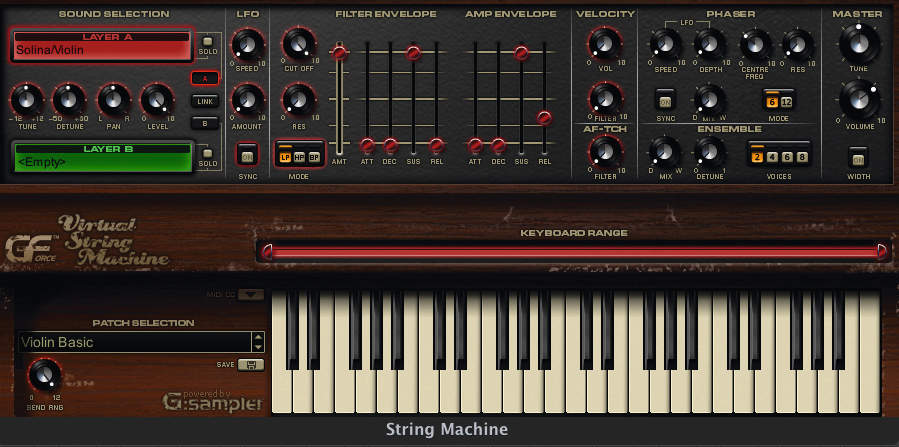MusicRadar Verdict
VSM sounds fantastic and, thanks to its dual layers, offers greater flexibility than the instruments it emulates.
Pros
- +
Your one-stop string synth. Twin layers add flexibility. Extensive preset library. Easy MIDI controller support. Realistically priced.
Cons
- -
Quite a specialist instrument. No user sample import.
MusicRadar's got your back
Modern sample libraries have made realistic string sounds easy to get hold of. But before sampling became the norm, string synths were the only keys-based options - the most famous being the Eminent Solina String Ensemble.
It's hardware such as this that GForce is emulating in its Virtual String Machine (VSM). This works as a VST/RTAS/AU plug-in or standalone instrument for Mac and PC.
Built around 5GB of sample content derived from a host of machines - including the Elka Rhapsody, Freeman String Symphonizer, Crumar Multiman and the aforementioned Solina - you might have the VSM marked out as a one-trick pony. But to keep things interesting, the synth engine is a twin-layer affair, and this makes it considerably more flexible than the machines that it's inspired by.
The VSM interface is simplicity itself, with sound layers loaded at the left-hand side, parameter controls (such as envelope and filter) in the middle, effects and outputs to the right and keyboard range above the keys.
To keep things tidy, the VSM's two layers use the same parameter knobs, which are highlighted in either red or green if you're editing a single layer, or blue if you've linked the layers to edit them together.
The effects (phaser and ensemble) and output sections are both global parameters and modify the combined sound of both layers. The ensemble effect is typical of the string machine genre, adding width and thickness to the sound, while the phaser includes two modes - six- and 12-stage - and can be synced to the host tempo.
Twin-layer patches (of which there are over 500) are loaded and saved to the left of the keyboard. And finally, MIDI controller assignment is activated via the icon above the patch selector. This provides control over 21 synth parameters for each layer, and ten global and effect parameters.
The sounds
Although perfect for a simple, high-pitched solo string sound, the VSM really excels when it comes to rich, wide pads. Page through all the basic layer sounds - from the rich warm Eminent 310 and Arp Omni, to the brighter Solina and organ-like Freeman - and you discover that the range is staggering.
The real revelation, however, comes when you go through the patch presets. Some of these are categorised by machine and some are from contributors (Ultravox's Billy Currie, for example).
The selection is amazing, going beyond what you'd expect from an 'ensemble' instrument. The ability to layer, envelope and filter different sources makes the VSM far more flexible than you'd imagine, and it's easy to knock up 70s-style Herbie Hancock sounds in just a few seconds.
The VSM is a very specific instrument, and it would be easy to criticise it on that basis. But it's highly adaptable, and for the purpose it serves, it's unmatched by any other plug-in or sample library.
Check out this audio clip of the Virtual String Machine in action:
Computer Music magazine is the world’s best selling publication dedicated solely to making great music with your Mac or PC computer. Each issue it brings its lucky readers the best in cutting-edge tutorials, need-to-know, expert software reviews and even all the tools you actually need to make great music today, courtesy of our legendary CM Plugin Suite.
"This $399 item will incur over $578 in additional import charges": Price of Sonicware CyDrums drum machine more than doubles thanks to Trump tariffs
“For guitarists who crave an unrelenting, aggressive tone that stands out in any mix”: The Fortin Meshuggah head is the amp every metal player wants – now you can get its crushing tones in a pedal
“At least you know I sing live”: Lady Gaga apologises to fans as she falls victim to a mic malfunction during her second weekend set at Coachella











